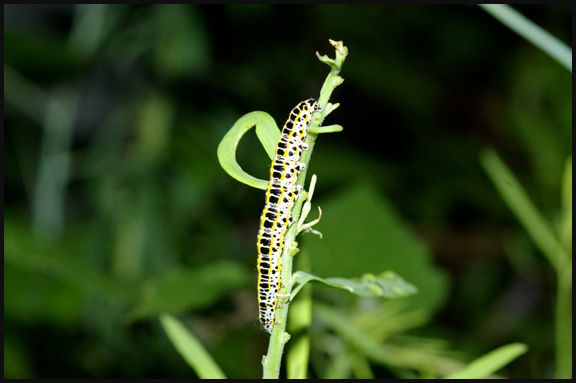100 Species #63: Toadflax brocade

Alexis found a pair of these caterpillars (Calophasia lunula) over by the main perennial beds.
I could simply call this the "toadflax moth caterpillar," but that would deprive us of the pretty and ornate common name "toadflax brocade." Toadflax is the weed in the snapdragon family that the caterpillar feeds on, and brocade is someone's fanciful idea of what the caterpillar's pattern looks like. This European insect was deliberately introduced to Canada in 1960, and to the west coast of the United States in 1968, to help control toadflax.
I don't mean to unduly criticize the agencies responsible for releasing this animal on a new continent, but it appears to me to be a poorly thought out decision. The caterpillar has a single host plant, so is unlikely to eliminate it. For example, gypsy moths can eat many different plants, and so huge numbers of them can actually have an effect on the ecosystem; if the toadflax brocade was to eat ALL the toadflax, they would quickly eat themselves to extinction. The adult moth feeds on the nectar of many plants including toadflax, meaning that the moth plays a role in pollinating and therefore sustaining the population of its caterpillar's host plant.
Since the larva only feeds on toadflax, which is itself an alien invasive, there doesn't seem to be any downside to the release of this non-native species in North America. In fact, you can apparently still get them if you would like to try to control toadflax with them.
This entry probably holds the record for the most dense usage of the word toadflax in the history of the internet.